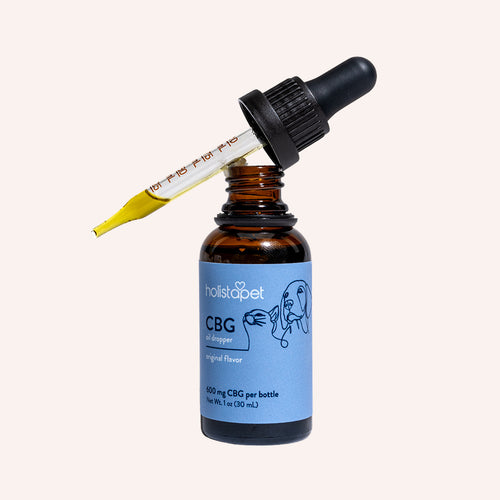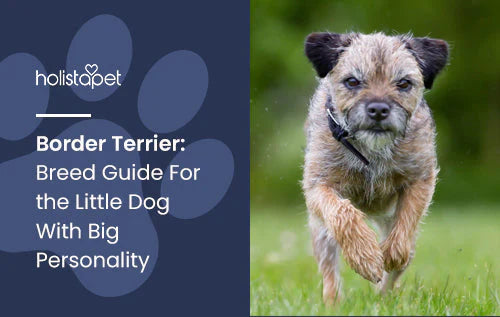The Japanese Chin, also known as the Japanese Spaniel, is a charming toy breed with an aristocratic background. These dogs are perfect indoor companions. They like to explore and climb, but Chins especially love a good lap to lay in. If you live in an apartment or are unable to provide the amount of exercise other dog breeds require, the Japanese Chin might be the pet for you.
Japanese Chin Dog Breed Characteristics
So, what does a Japanese Chin look like? With a broad head, large wide-set eyes, and a short muzzle, the Japanese Chin could be mistaken for a short-haired Shih Tzu or a Lhasa Apso. Their plumed tails arch over the back, curving to one side of the body.
The Japanese Chin sports a single coat that can be multiple colors, the most common of which are black and white or red and white. A Japanese Chin has thick hair around the neck and shoulders, as well as fur that almost resembles pants around the hind legs. Its broad head, large wide-set eyes, and flat snout result in an expression that many Chin owners describe as a "look of astonishment." Overall, their appearance is noble and refined, worthy of their regal ancestry.
Japanese Chin Dog Breed Size
Japanese Chins are the ideal lap dogs, with a generally small adult height (8 to 11 inches) and weight (4 to 12 pounds) in both males and females. This dog is usually classified as part of the "toy group," though such classifications may vary from registry to registry.
Toy dogs have been bred down to a small size, ideally suited for holding. These breeds have served as both symbols of affluence and watchdogs in ages past.
Japanese Chin Dog Breed Personality
The toy breed consists of dogs that are often intelligent, easy to get along with, and protective. The Japanese Chin, or Japanese Spaniel, is a calm and attentive pet. Don't be alarmed by its lack of barking, because this is a defensive breed that will often save its voice for emergencies. If Japanese Chins think someone is intruding, they may yap or "chatter" (between a bark and a growl) to draw attention.
Because of their quiet nature, independence, and proficiency in climbing, Japanese Chins are frequently called the most cat-like dog breed! Just like cats can be stubborn and curious, Chins may ignore commands if they feel like exploring. Prone to wandering, a Japanese Chin should be kept on a leash when going for a walk. If you keep your pets restricted to a certain area of your home, make sure these little climbers can't weasel their way out!
Japanese Chin Dog Exercise
This breed may love a good couch or lap, but a Japanese Chin will still have regular exercise needs. The Chin doesn't need as much activity as the Australian Shepherd, or as much couch time as the English Bulldog. It enjoys slow walks and exploring an enclosed area. These pets love to wander, so be sure there is a fence or leash to stop the dog from getting too far. Give your Japanese Chin about 20 minutes of light exercise every day.
A Japanese Chin might be reserved around dogs or people it doesn't know, but with the right socialization training, it will enjoy a leashed walk in the park or some untethered (yet supervised) playtime in a dog park. Be sure to keep an eye on your pet when outside, though, as its squished snout could give your Chin issues in hot weather. Signs of overheating include disorientation, rapid breathing, collapsing, convulsing, and bright red or blue gums.
Japanese Chin Dog Breed Training
To give Japanese Chins proper training, positive reinforcement is key. This "feline" dog was bred to charm and comfort their owners, so if training feels like a chore for you, it'll feel the same way to your Chin. A Japanese Chin has the tendency to only do what it wants to do, so try to have fun with the instruction. These pets want to be there for you, so make the dog feel like it's helping you by learning the commands you're giving it.
At the first sign of harshness, this breed may shut down and respond poorly to additional training. Housetraining a Japanese Chin can be tricky. If asked to do the same thing over and over, they can get bored and search for something more enjoyable to do. When training for obedience, this is usually a mild annoyance.
If your Chin gets bored of housetraining, however, the consequences can be much messier. As early in its life as possible, refine your pet to one area of the house. Crates or enclosures tap into a dog's natural instinct to call a cozy, secure place their den. Canines are less likely to soil their own den, but they (and especially puppies) won't be able to hold it forever. If you are taking your Japanese Chin out of its confined space, head straight outside so that it can associate relieving itself with the outdoors!
Japanese Chin Dog Breed History
The Japanese Chin is a mysterious dog. The exact origin of the breed is still unknown, though there have been many suggestions. Some theories have claimed that this canine hails from China or Korea, and was gifted to Japanese royalty. Others suggest the dog was brought into Japan by Buddhist monks or European merchants.
Being the "Japanese" Chin, Japan is unsurprisingly the furthest back we can definitively trace its roots. Roughly 500 to 1,000 years ago the Chin arrived in Japan. Despite the first half of its name, the animal was believed to have originated in China. However, the look and feline nature of this breed is largely thanks to the Japanese.
Fast forward to the mid-nineteenth century, and Japan opened its trade routes after 200 years of isolation. This is around the time the West was introduced to the Chin, and the companion pet has been thriving ever since.
Formerly Known as The Japanese Spaniel
You may notice that some refer to this canine as the Japanese Spaniel. If this breed has been around so long, then why haven't we decided on a name yet? Well, for nearly a hundred years, the animal was called a Japanese Spaniel, as "Spaniel" was a term that applied to all tiny, fluffy dogs at the time. In Japan "Chin" refers to royal lap dogs that are the descendants of Chinese aristocracy.
In 1977 the AKC changed the name from Japanese Spaniel to Japanese Chin, though many other countries still refer to the animal as a Spaniel. The American Kennel Club (AKC) is one of the biggest authorities on canines in the United States. Of the 21 breeds that make up the AKC's toy group, the Japanese Chin was one of the earliest to be recognized by the organization (1888). Fun fact: The Pug was the first of the toy breeds to be recognized by the AKC in 1885, just three years before the Chin!
Japanese Chin Dog Breed Health Problems
Generally, these toy dogs are very healthy. Still, like many breeds, Japanese Chin dogs may come with their own potential for certain health problems. Some of the issues listed below are congenital and untreatable. These health complications are commonly the concern of those who breed Chins.
The Japanese Chin Club of America advises that breeders test for eye, heart, and patella conditions, as well as DNA testing for the GM2 mutation. If you're not a breeder, the best thing for your pet's health is regular exercise and trips to the veterinarian.
Here are a few common health conditions your Japanese Chin may struggle with:
Impacted Anal Glands
Smaller dogs, such as Japanese Chins, are more prone to suffer from impacted anal glands than larger breeds are. A dog with this issue may scoot their butt along the ground, lick or itch their anal area excessively, have trouble defecating, or have blood or pus in their stool. If your pet shows any of these signs, they may need anal glands expressed or emptied.
Groomers and veterinarians can express the glands, as well as experienced owners. If the glands become infected, pain can accompany this condition, and medical attention may be necessary. Take your pet to the veterinarian if symptoms persist.
Luxating Patellas
This condition, commonly called "slipping kneecaps," causes your Chin's patella, or kneecap, to become easily dislocated. Patellar luxation can be one of four different grades, each with its own set of symptoms. First-grade luxation means that the kneecap can be manually displaced, but will return back to the appropriate spot on its own.
Dogs with this severity of the condition are generally comfortable and walk without limping. Second-grade luxation signifies that the kneecap displaces by itself, but also returns to the right spot on its own. An affected Chin might struggle to walk with one or both of their hind legs. The third grade of this condition may cause lameness in your pet.
If your Japanese Chin has patella that can be easily displaced on their own and require manual reinsertion, the dog may have grade-three patellar luxation. The fourth grade of slipping kneecaps is where the patella slides permanently out of place, and affected animals often shift their weight to their front paws. Chins that suffer from third or fourth-grade patella luxation may need corrective surgery. This would involve deepening the groove in the femur that the kneecap normally fits into, or realigning the tendon.
Related Product: Canine Joint & Mobility Chews
Cataracts
A cataract is a clouding of the eye lens. It is sometimes confused with nuclear sclerosis, which is the hardening of a dog's eye lens. This hardening might cause the eye to become hazy, but nuclear sclerosis does not significantly impact the pet's vision and is common in aging dogs. Cataracts look like a white disk behind your dog's eyes. These can be caused by trauma, inflammation, diabetes, or congenital abnormalities.
The Japanese Chin Club of America tested dogs over an 8-year period for any health concerns. They found that 15% of the Chins they examined had cataracts. This prompted many breeders to begin screening their stock for hereditary conditions. If your furry friend is failing to respond to visual stimuli, treatment is available and it might be possible for their sight to be restored. If untreated, cataracts could lead to permanent blindness.
Hypoglycemia
This condition, also known as low blood sugar, is common in small dogs such as the Japanese Chin. The amount of muscle tissue an animal has plays a big role in how well it can regulate glucose (blood sugar) levels. The small size of a Chin (usually when they weigh 4-5 pounds, 6 months or younger) means less muscle mass, which sadly means they run a higher risk of developing hypoglycemia.
Any toy breed owner should have some source of high-glucose food or drink readily available. If your pet appears near-unconscious during a hypoglycemic attack, give them sugar water or glucose concentrate immediately. Symptoms for this condition include a lack of appetite, lethargy, incoordination, shaking, muscle spasms, frailty, and dilated pupils. A veterinarian's treatment for hypoglycemia will depend on the cause of its low blood sugar.
Related Article: Why Is My Dog Not Eating? [How To Help]
Epilepsy/Seizures
A seizure is the temporary loss of brain functionality and sadly they tend to affect this breed more than others. If you're unsure of whether or not your pet is suffering from seizures, they generally come in three stages:
Pre-ictal phase
Lasting a few seconds to a few hours, your pet may act as if it's expecting something to happen. It is frequently accompanied by nervous or restless behavior, including salivating, whining, and/or shaking.
Ictal phase
Lasting a few seconds to several minutes, this is the stage in which a seizing dog will experience loss of brain function. The signs can be mild (a dazed look, mild shaking, staring aimlessly, licking lips) to severe (spastic muscle movement, drawn-back head, urination, defecation, salivation, loss of consciousness). If the seizure has not stopped within five minutes, immediately contact a veterinarian.
Post-ictal phase
Following the seizure, your pet might feel confused. Salivation, pacing, restlessness, or temporary loss of vision is not unheard of in the post-ictal phase. A longer or more intense seizure does not inherently mean a prolonged post-ictal phase and vice versa. Give your pet the comfort it needs as you take it to a veterinarian.
Unfortunately, any dog can have a seizure. It could be brought on by the brain's reaction to a metabolic issue — such as hypoglycemia — or an ingested toxin. These are called reactive seizures. Secondary seizures are the result of something else wrong with the dog's brain, such as a stroke or a concussion.
If seizures repeat without seeming to be reactive or secondary, the Chin could have idiopathic epilepsy. This form of epilepsy is inherited, without any known cause, and is the most common reason for dog seizures. While there is no cure, medication can reduce the frequency and severity of your dog's episodes.
Early-Onset Heart Murmurs
Heart murmurs are not the same as the sound of your pet's heart beating. Murmurs are the sound of blood flowing abnormally through the heart, usually a "whooshing" or a "swishing" noise.
The most common cause of heart murmurs in lapdogs is atrioventricular endocardiosis. This is a chronic degenerative disease that causes some of the valves of the animal's heart to not close properly, causing blood flow to become turbulent or blood pressure to rise. We hear these issues as heart murmurs. This disease causes the heart to not work as efficiently, and could eventually lead to heart failure.
Medication can help take some of the strain off of your Chin's heart. ACE inhibitors like enalapril or Fortekor prevent the production of a substance that narrows your blood vessels, which might help lessen your dog's blood pressure. Other drugs that strengthen the heart (such as digoxin) can be used, though any drugs should first be approved by a veterinarian. Dental care and fatty acid supplements can also assist in heart disease prevention.
Tay-Sachs Disease
Also known as GM2 gangliosidosis, this hereditary ailment prevents brain cells from recycling their own molecules. Worn out molecules will accumulate within the cell, leading to poor brain health.
Mental dullness (not responsive), issues with balance, a goose-stepping walk, excessive head shaking (especially when eating), weakness, and lack of environmental awareness are all symptoms of gangliosidosis. These indicators will generally arise around 1-2 years of age, and progressively grow worse. This is an inherited disease and cannot be prevented or treated. If you'd like to test your dog for gangliosidosis, a test can be ordered from the Orthopedic Foundation for Animals.
Brachycephalic Face Issues
A brachycephalic face is short and broad, such as that of a Pug or Bulldog. Like many of these "squished face" dog breeds, breathing and eye problems might occur. Long periods of heat exposure should be avoided, as your Japanese Chin may have difficulty breathing after some time.
The eyes of brachycephalic faces are often oversized and prone to scratches or ulcerations. Scratches can be soothed with an antibacterial ointment, though you'll want to check with a veterinarian to ensure the medicine is safe for a canine's eyes. Ulcerations are not uncommon in dogs but will require medical care. If your Chin is excessively tearing, squinting, or pawing at its eyes, seek out a professional diagnosis.
Dogs with brachycephalic ("squished") faces are also more prone to overheating. Heat exhaustion can be combated with water, so be sure to watch out for dehydration in your pet. A dehydrated dog may have sunken eyes and dryness in the mouth, gums, and/or nose.
There are two dehydration tests you can perform on your Japanese Chin. If you pull the skin at the back of your dog's neck back and release it, the speed with which the skin returns to its normal position can be an indicator of how much water your dog needs. The longer it takes the skin to lie flat, the more dehydrated your dog is.
Another test is to press your finger against your dog's gums. They should turn white, and return to their normal color after removing your finger. If you take away your finger and the color doesn't immediately return to your Chin's gums, your dog may be dehydrated.
How to Care for a Japanese Chin Dog Breed
The Japanese Chin is a relatively easy dog to care for. Persistence is key when training this wandering canine. As long as you keep their attention, Chins are eager and quick to learn.
Strangers might cause this breed to get sheepish! But, with the right training, they're quite social with animals they've gotten comfortable around. If you're restrained to minimal activity and have to keep your Chin at home for most of the day, they love lounging, too! Just be sure you're giving them 20 minutes of light exercise daily!
Nutrition and Feeding for Japanese Chin Dog Breed
At only 8 to 11 inches tall, your average Japanese Chin will need about 1/4-1/2 cup of dry dog food a day, divided into two meals. Make sure the food you serve them is high in fiber, as Chins can suffer from impacted anal glands if not given enough. However, don't be too alarmed by a lack of weight, 4 pounds is still generally considered normal for the breed. Make sure not to overfeed your pet just because it appears small. Pet food companies know that different breed sizes require different proportions.
For example, food for larger dogs often focuses on protein and L-carnitine to boost muscle mass, while small breed kibble features proteins and carbohydrates specifically combined to satisfy the energy requirements of a toy dog. Additionally, food for lap dogs often comes in smaller pieces to assist chewing and tartar removal. All of this is taken into consideration so that your dog stays in good health.
Browse Our Premium Selection Of Nutritious Dog Treats
Coat Color And Grooming
Another reason it's called one of the most feline-like breeds is that the Japanese Chin can often be seen cleaning itself by licking its paws and wiping its head. These are traditionally prim and proper dogs, so frequent baths may not be necessary. Give your Chin monthly baths, a daily pin brushing, and a weekly rake brushing.
The pin brush will gently remove any minor mats or tangles in your pet's hair. The rake brush will dig deeper into your pet’s fur, freeing it of loose hair and any other debris that might be sitting in your Chin's coat. Daily use of a pin brush will mean less work during the weekly rake brushing.
Different dog breeds will have either a double or a single-coat. A single-coat breed, the Japanese Chin generally comes in black and white, red and white, or a combination of the three colors. Their hair, thick and silky, generally doesn't mat or require trimming, though the fringes around their ears might need closer attention.
The best indication that your Chin needs a bath is a dirty or smelly coat. In addition to brushes and baths, trim your Chin's nails once or twice a month. If your pet's nails are clicking and clacking down the hallway, it's time for a trim. Perform flea checks on your pet's coat monthly. Check their skin, nose, mouth, eyes, paws, and ears weekly for any abnormal discharge, sores, or rashes.
Related Article: Home Remedies for Fleas on Dogs [Proven Methods]
Children And Other Pets
Japanese Chins are small and delicate, so they are not recommended for households with young children. Small animals should always be supervised when with a child or a larger dog. A child might hurt the pet without even knowing it! Also, a larger dog could accidentally injure a Chin while they're playing. Of particular concern are the Chin's large eyes, which are more easily scratched than other breeds.
Children who have been properly trained on how to hold and handle a small animal will love the Japanese Chin. With the right social practice, this breed gets along wonderfully with others. After some initial shyness, these aristocratic furballs are exploratory and fun-loving!
Rescue Groups
As Karen Davison (author of A Dog's Guide to Humans) once said, “Saving one dog will not change the world, but surely for that one dog, the world will change forever.”
If you'd like to adopt a Japanese Chin, there are several rescue groups that can assist you! National rescue groups include Luv a Chin Rescue, the Japanese Chin Care & Rescue Effort, and Start Over Rover. If you're in the central United States, the Colorado Japanese Chin Rescue is a group of unpaid volunteers who rehabilitate Chins for adoption. Also, feel free to hop on the Facebook group Rescue Me! Japanese Chin Rescue to see if there are any dogs near you in need of a home.
Breed Organizations
A kennel club is an organization that promotes and shows dog breeds. If you'd like to enter your Chin into an event, or merely wish to stay up to date on responsible pet ownership and canine preservation, a kennel club could be just the thing for you.
Popular clubs in the United States include the American Kennel Club (AKC), the United Kennel Club (UKC), and the Westminster Kennel Club (WKC). These are all-breed organizations. If you're looking for a group that will focus its efforts on just Chins, check out the Japanese Chin Club of America.
More About This Dog Breed
The exact origins of the Japanese Chin are a mystery, but many experts agree that China is most likely where the breed began. "Chin" is a word that refers to royal lap dogs that are the descendants of Chinese canines. The breed is also thought to share the same roots as the modern Pekingese, another Chinese dog.
It's no secret that many pets are bred to favor a particular quality. Pointers were used for pointing, Retrievers would retrieve, and Bulldogs were bred to attack bulls in the bloodsport known as bull-baiting. Though their name doesn't offer us a clue, the shrinkage of this breed was also purposeful. The Chins tiny bodies were ideal for fitting into the sleeve of a woman's kimono. Well before Paris Hilton and Tinkerbell, her Chihuahua, the ladies of Japan were pros at portable puppies!
The Japanese Chin, or Japanese Spaniel, is a delightful little dog. Watching one trot around the house with its thick coat and big eyes, it's easy to see why the dog's ancestors were prized by the socialites of Japan, China, and Britain. Look into adopting a Japanese Chin if you want a calm, cat-like lap dog that loves curling up on the couch just as much as exploring!
Read Next: Japanese Spitz Dog Breed Guide: Get To Know This Rare, Fluffy Pooch


 CBD Oil for Dogs - Fast Acting
CBD Oil for Dogs - Fast Acting
 Chicken Flavored CBD Oil For Dogs - Easy Dose
Chicken Flavored CBD Oil For Dogs - Easy Dose
 Salmon Flavored CBD Oil For Dogs - Highly Rated
Salmon Flavored CBD Oil For Dogs - Highly Rated
 CBG Oil for Dogs and Cats - Loved by Thousands
CBG Oil for Dogs and Cats - Loved by Thousands





Leave a comment
All comments are moderated before being published.
This site is protected by hCaptcha and the hCaptcha Privacy Policy and Terms of Service apply.